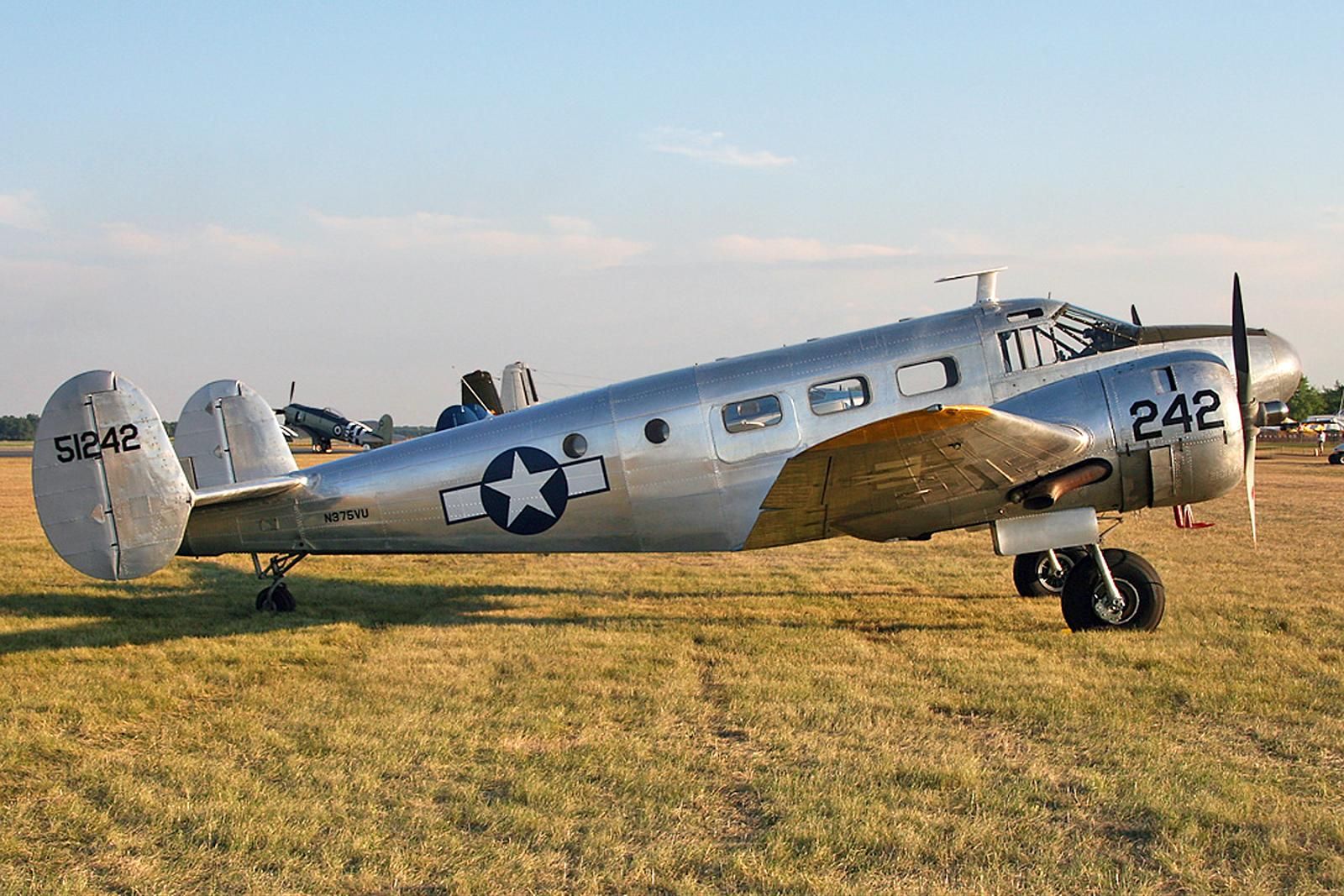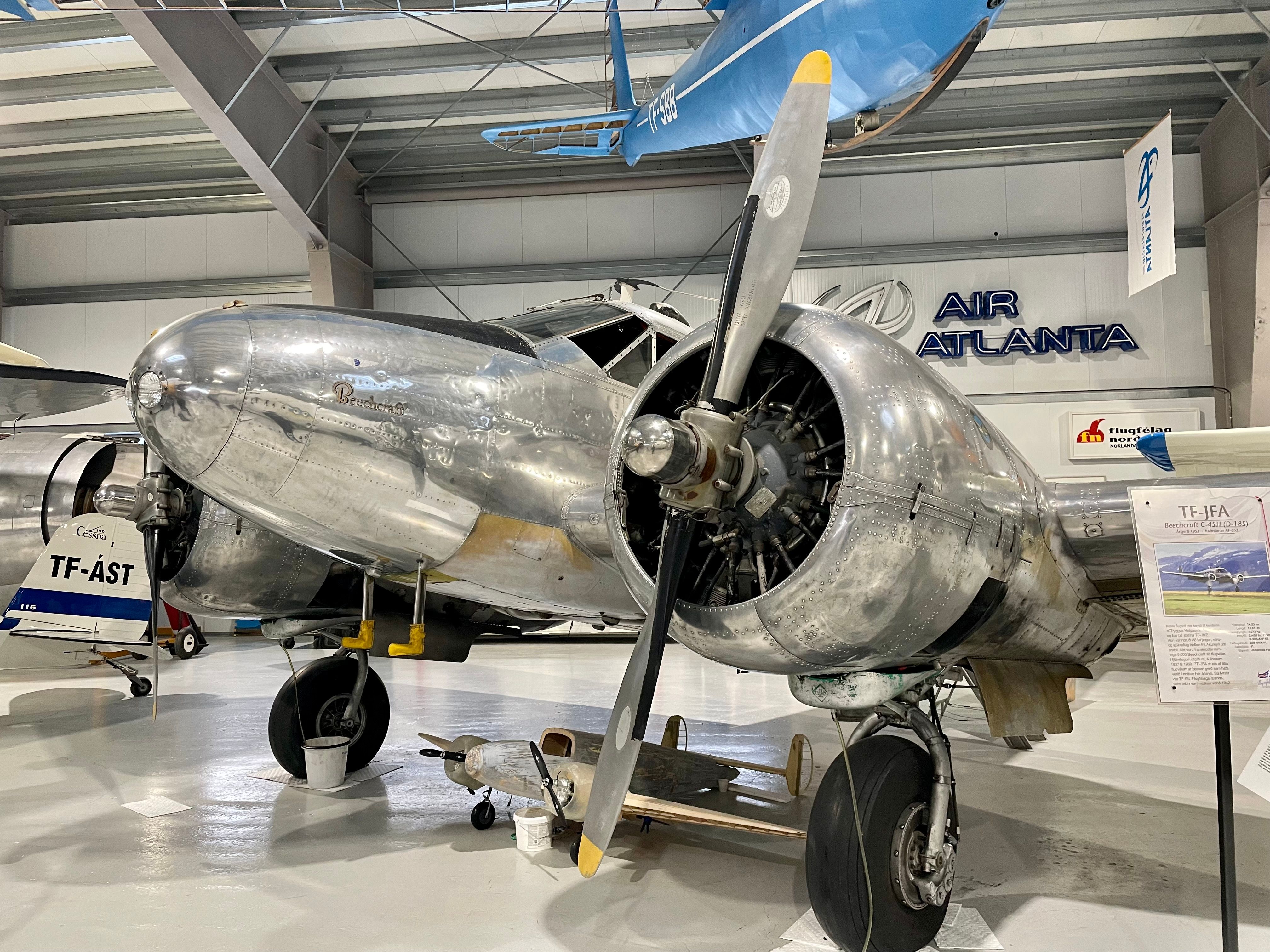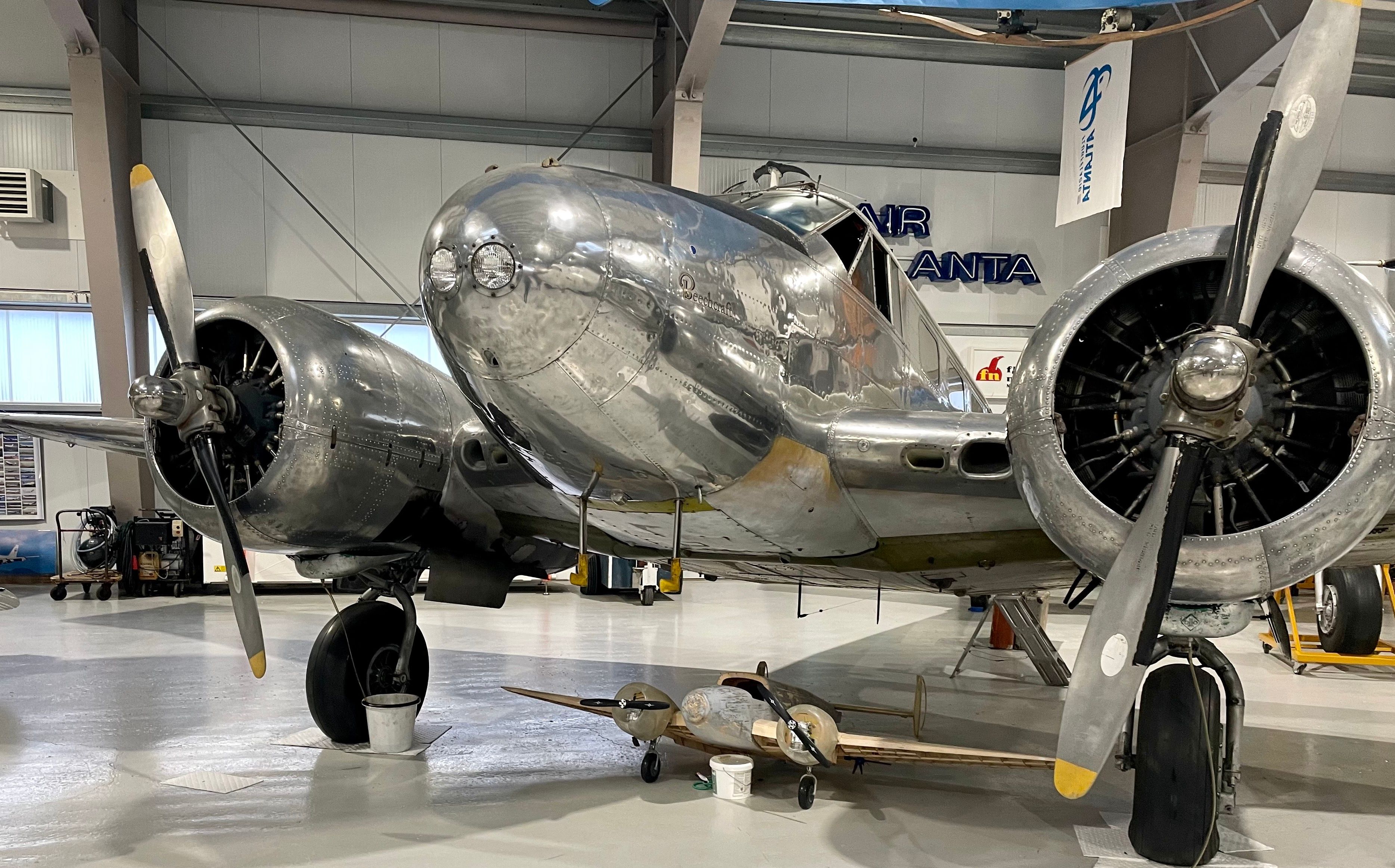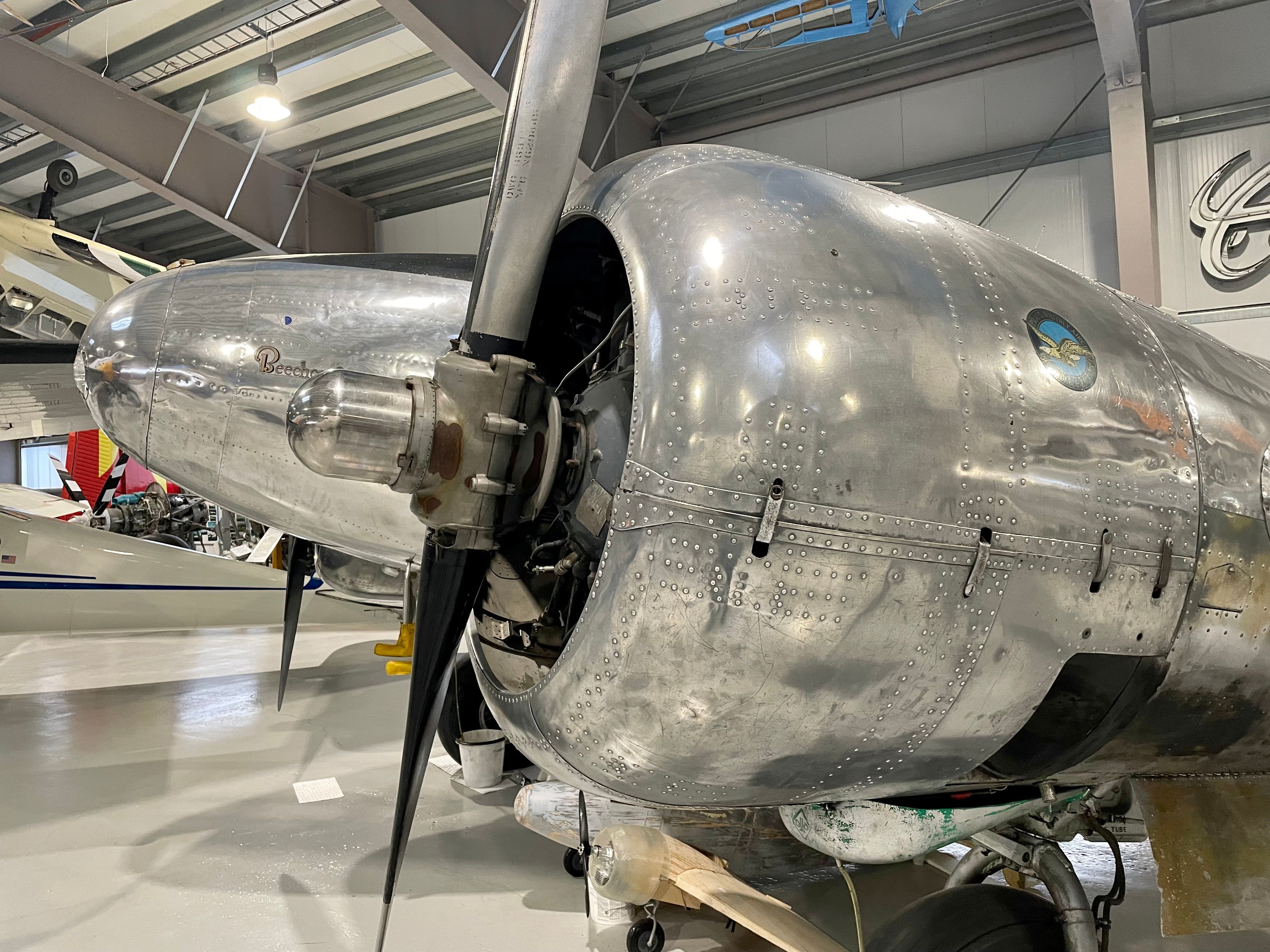Simple Flying paid a visit to the Icelandic Aviation Museum at Akureyri Airport, Iceland, last month, where we spotted a Beechcraft C-45. We were impressed with the tales of the aircraft’s versatility and thought we’d dive deeper into the type’s history.
A local example
Locally known as Flugsafn Íslands, the museum was formed in 1999 due to the lack of room for private planes at the airport. The C-45 at the facility arrived in Akureyri on July 2nd, 1964, holding registration TF-JME.
One of Icelandair's predecessors, Norðurflug, turned to the Beech 18 “Twin Beech” series in 1964. The airline's founder, Tryggvi Helgason felt that the type was a great suitor for regional operations across Iceland. Another C-45 soon joined in the form of registration TF-JMD.
TF-JME would have to wait four years to hit the air with the carrier. It underwent conversion work into the "Hamilton Little Liner" standard and entered service with a better payload in 1968.
Get the latest aviation news straight to your inbox: Sign up for our newsletters today.
Utility player
Norðurflug put the aircraft to good use across several services, including passenger, cargo and emergency operations, until it was phased out in 1978. While the plane enjoyed great civil success, it was originally a military veteran.
With information supplied by aviation historian Bob Parmerter, the Icelandic Aviation Museum highlights that the aircraft was built for the United States Air Force (USAF) in 1953. Still, there is more than meets the eye.
As the museum shares:
“Research, however, reveals that the aircraft is one of 900 World War Two vintage Beech T-7, T-7C, C-45B and C-45F that were completely rebuilt by Beechcraft according to contract from 1951. TF-JFA was originally built in 1942 as a Beechcraft AT-11, c/n 1286. It was delivered to the U.S. Army Air Forces Bombardier Training School at Victorville, California on 9th May, 1942, with the USAAF serial no. 41-27441. After the war, 41-27441 was stored at Norton AFB in California. In 1948 the type designator was changed from AT-11 to T-11. I:”
The plane was moved by railroad to Herrington, Kansas, in 1953, where it was rebuilt by Beechcraft. The revamped model was now a C-45H transport with a new Air Force serial number, 52-10672. The unit arrived at the USAF Continental Air Command in Ellington AFB, Texas, on January 8th, 1954.
The museum states:
“It is known that 52-10672 was based in New York City sometime around 1956. In 1958 the aircraft was back in California, now serving with the 195th FIS, California Air National Guard, based at Van Nuys (Los Angeles). In 1963 52-10672 was declared surplus to requirements and put in storage at Davis Monthan AFB in Arizona.”
Love aviation history? Discover more of our stories here.
Regional progress
While Iceland wasn’t the most prolific operator of the C-45 or a contributor to its production, the country’s services with the plane emphasize its ability to operate in tricky and remote regions. The museum’s unit currently holds registration TF-JFA. Powered by a pair of Pratt & Whitney R-985-AN14Bs helping the aircraft reach a cruising speed of 298 km (160 NM), the C-45H could hold up to 11 people. It has even taken off in recent years, acting as a testament to the type’s longevity.
Beechcraft is a regional aviation powerhouse. The US outfit has significantly contributed to the growth of short-haul air travel over the years. From the 1900 to the Premier I, the company's productions can be spotted worldwide. It even experimented with some left-field designs, such as the Starship.
Altogether, more than 9,000 Beech 18 aircraft were produced between 1937 and 1970. It enjoyed great military triumphs on both sides of the Atlantic Ocean and is still in service with several operators around the world.
In the US alone, there are approximately 240 units registered. With numerous variants and adaptations throughout the decades, it has managed to show its versatility across the aviation spectrum.
What are your thoughts about the Beechcraft C-45 and the overall Beechcraft 18 series? What do you make of the operations of these aircraft throughout the decades? Let us know what you think of the planes and their services in the comment section.
Source: The Icelandic Aviation Museum




